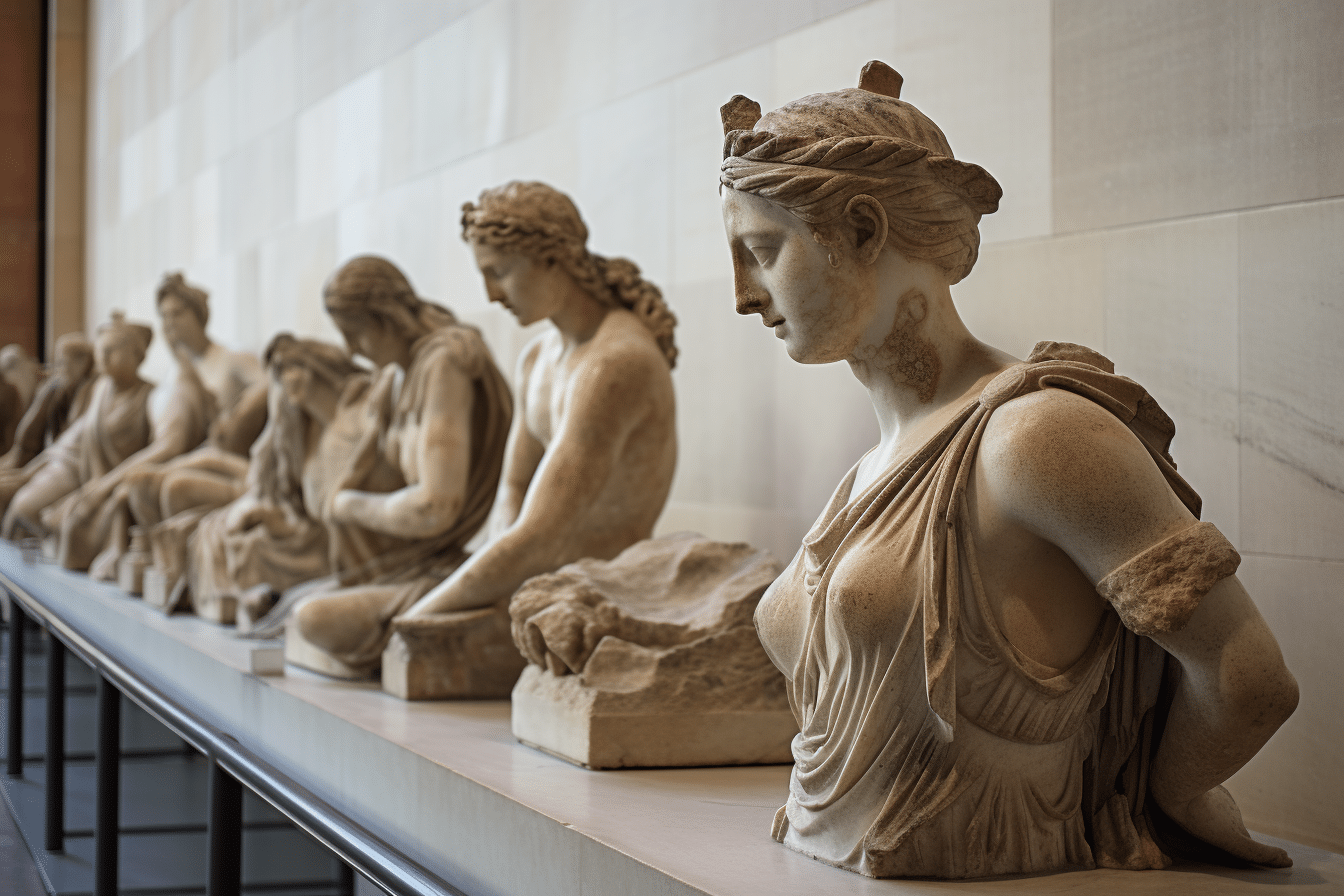
When we think of classical Greek marble sculptures, we often imagine them as they appear today – crisp and pristine white structures standing tall in museums and galleries worldwide. However, a recent study published in the journal “Antiquity” has shed light on a different aspect of these ancient artworks, revealing that the famous 2,500-year-old Parthenon sculptures were once adorned with colourful floral patterns and elaborate designs.
Researchers at the British Museum, where nearly half of the Parthenon sculptures are housed, in collaboration with King’s College London, employed a noninvasive imaging technique to uncover traces of paint on 11 out of 17 figures and from a section of the frieze on display. Dr. Giovanni Verri, the lead study author and a conservation scientist at the Art Institute of Chicago, explained that the paint layers were fragile and situated at the very top of the surface, making them susceptible to environmental impact. He stated, “These are just thin paint layers at the very, very top of the surface of these objects, and so they are at the interface between everything that happens. … (The paint) is the first to get the impact of the environment.”
The technique used to unveil the remnants of paint is known as visible-induced luminescence imaging, a process created by Dr. Verri in 2007. This method utilizes infrared light to detect microscopic traces of paint that are invisible to the human eye. One of the most intriguing finds was the presence of a pigment called “Egyptian blue,” a popular pigment of its time made using calcium, copper, and silicon. The “Egyptian blue” was discovered in several locations on the sculptures, including the serpent tail on the sculpture of mythical king Kekrops, within the background space of statues Demeter and Persephone, and on the garment worn by Dione, mother of Aphrodite.
In addition to “Egyptian blue,” the researchers also detected a unique purple colour named “Parthenon purple.” Unlike the everyday ancient Mediterranean recipe for purple that utilized shellfish, this hue was not made using shellfish, marking it as particularly unique.
The findings from this study are significant as they challenge the traditional Western perception of classical art as exclusively comprised of white marble. “This recent study proves that colourful decoration was common in ancient Greek art,” said Michael Cosmopoulos, a professor of archaeology and Greek studies at the University of Missouri–St. Louis.
While a complete reconstruction of the sculptures’ original appearance is impossible, the study has opened the door to a deeper understanding of the ancient world and the importance of colour in Greek art. As research progresses, it is hoped that further imaging will reveal other colours on the sculptures, further enriching our knowledge of these ancient masterpieces.
The discovery of “Egyptian blue” and “Parthenon purple” on the Parthenon sculptures is not merely a testament to the technological advancements in archaeology but also a step towards redefining our understanding of classical Greek art. These colourful traces offer a glimpse into the vibrant world of the ancients, where colour played a crucial role in artworks’ aesthetic and symbolic value. As we continue to explore and uncover the hidden hues of history, we can anticipate gaining a more holistic and accurate portrayal of the past, ultimately bridging the gap between ancient and modern perceptions of art and culture.
